Our Gladiator Cargo Net has become a favorite among fleets for its toughness, flexibility, and ease of use.
Companies that use our cargo nets range from the oil and energy industry to military tanks, all the way to space rocket launches. Below are some of the companies that put our cargo nets to the test. Call (916)386-4271 for discounted bulk fleet pricing.
Fleet Testimonials

Weatherford:
“The cargo net we got meets or exceeds all of Weatherford’s requirements for secure and safe transportation of equipment.” -Rod Elliott
Atmos Energy:
“I consider your safety cargo nets priced effectively and the ease of use would be another asset. Our field employees have had nothing but good things to say about the product and we thank you for your prompt and courteous service in getting them to us for the week of the federal safety push.”
William Scotsman:
“They are doing exactly what you said they would do. They see VERY rough service on our trucks and we have the original two still on our toters with no rips tears or even fading. I would give them a 10 of 10 rating.” -Brook Cash, Lead Service Tech
HOW TO PROTECT YOUR FLEET: LOAD SECUREMENT FINES ARE ON THE RISE
Insurance, fuel, preventive maintenance and repairs are generally accepted as standard operating costs for fleets. What about avoidable violations like unsecured load fines?
Most fleet managers agree that vehicle issued violations present a costly, burdensome problem that use valuable resources and are avoidable.
In today’s company culture of pro-safety, violation-related issues are becoming a more visible discussion topic in the fleet world. Unsecured load violations are on the rise, driven in large part by the Department of Transportation (DOT). This overview seeks to provide fleet managers with an understanding of the trends in unsecured load related traffic violations, as well as opportunities for saving money and reducing risk in dealing with these violations.
Proper load securement is essential to work truck fleets. The same rules apply to pickup trucks and utility trucks that carry a DOT number as to commercial shipping trucks. The DOT requires all cargo to be secured to prevent it from falling from the vehicle and causing accidents, injuries or fatalities. Loads are subject to many forces: speed & braking, cornering, and even wind. Anything that falls out presents a significant hazard to other vehicles on the road. This is especially dangerous to motorcycles
The most common cargo-related violations issued to fleet vehicles:

As seen in the chart above, violations due to cargo securement are severe and nearly always end up in Out of Service (OOS) violations. OOS violations are hugely inconvenient and disrupt operations down the line. They cost $861 dollars on average, excluding the cost of the fines or repairs.
DOT Crackdown
The Department of Transportation is cracking down on commercial fleet vehicles and focusing on violations such as cargo securement. In 2013, the Commercial Vehicle Safety Alliance (CVSA), in conjunction with local law enforcement, set up vehicle inspections across North America for a safety awareness campaign. They completed 73,023 truck and bus inspections during the 72-hour safety event.
Of their inspections, a total of 47,771 were North American Standard Level I inspections, the most comprehensive roadside inspection, in which vehicles and drivers are assessed for violations of federal, state or Canadian provincial safety regulations. Other inspections conducted were vehicle-only or driver-only inspections. Of Level I inspections, 24.1 percent had Out-Of-Service (OOS) order violations. That’s up from 22.4 percent of vehicles placed in OOS in 2012.
Of 71,630 driver inspections, including those conducted during Level I inspections, only 4.3 percent were found with OOS violations. This shows that violations are mostly due to vehicle problems, not the drivers themselves.
Over 80 percent of cargo securement-related violations resulted in OOS violations. The CVSA noted that loss of a load is always a severe risk to safety. Inspectors looked for signs of improperly secured loads such as inadequate number of tie downs, damaged webbing or chain, and other load securement violations.

Driver Penalties
Minimum civil penalty assessments for drivers have increased in recent years. Under previous rules, OOS violations carried a minimum civil penalty of $1,000 for a first and second conviction. That amount has been increased to a minimum penalty for the first and second convictions to $2,500 and $5,000, respectively.
Employer Penalties
Maximum civil penalty assessments for employers has also been increased. Under the previous rule, an employer that knowingly allowed or required an employee to operate a commercial vehicle in violation of an OOS order was liable for a civil penalty of no more than $10,000. The new rule increases the maximum civil penalty assessment to $25,000.
Current State Laws
All 50 states have some sort of law regarding unsecured loads regardless of DOT registration. All have exemptions, mainly for roadwork and agriculture, except for the following nine states: Delaware, Kentucky, Missouri, Nebraska, New York, South Dakota, Texas, Vermont, and Wisconsin. Most common language used states that “no vehicle shall be driven or moved on any highway unless such vehicles is constructed or loaded as to prevent any of its load from dropping, shifting, leaking, or otherwise escaping there from.”
All 50 states have fines ranging from $10-$5,000; 15 states add the possibility of imprisonment. States can then add heavy littering fines on top of this.

Government Accountability Office, “Highway Safety: Federal and State Efforts Related to Accidents That Involve Non-commercial Vehicles Carrying Unsecured Loads: Report to Congressional Committees”
Classification and Statistics
Law enforcement say they have difficulty assessing what constitutes an unsecured load accident due to the ambiguous statutory language in their incident reports. They must witness the load fall, or have the load actually fall to the ground, to be considered a violation. This skews the statistics regarding how big the problem of unsecured cargo loads is. This language makes law enforcement respond reactively rather than proactively. Can you imagine officers only being able to give a seatbelt ticket if they see you crash and fly through the windshield?

Load Securement Safety Program
A load securement safety program has many benefits to both fleets and drivers.
Benefits of a Fleet Cargo Securement Program:
- Eliminates unsecured load violations
- Deters law enforce engagement by using a certified tie-down system; visual deterrent
- Reduces risk and liability of companies
- Improves safety compliance of companies
- Improves safety for all motorists
- Improves and preserves the environment
What does a Fleet Cargo Securement Program entail?
Adopt a company-wide cargo safety & securement policy using the following safety objectives:
- All loads are to be properly secured no matter their size, dimension or weight to ensure safe transportation.
- Cargo safety and compliance with DOT regulations should always be a top priority for any company. Proper load securement protects employees, customers, and members of the public from injury and minimizes damage to loads, equipment and vehicles.
Load Securement
Drivers must ensure that their loads are properly secured and that there are no loose objects that could fall from the vehicle in a collision or any hazardous condition. Use the following safety rules to secure loads:
- Ensure that the load is secure at all times.
- Check load platform, bodywork, and cargo securing equipment are sound and serviceable.
- Secure cargo so that it cannot move, roll over, wander because of vibrations, fall off the vehicle, or tip.
2. Pre-operational check is required for all ratchet mechanisms, binders, cam buckles, and cargo nets and straps to ensure they’re in safe and proper working condition. The CVSA has the following Out-of-Service criteria for synthetic webbing straps:
- Knot(s)
- More than 25% of stitches separated.
- Broken or damaged hardware.
- Any repair or splice webbing.
- Overt damaged webbing.
- Severe abrasion cumulative for entire working depth of the strap.
- Cuts/burns/holes exceeding width of ¾ inch for 4” wide webbing, exceeding 5/8 inch for 3” wide webbing or 3/8 inch for 1 ¾ -inch or 2” webbing. Defects through the webbing are additive across the width of the strap’s face for its entire effective length.
3. Verify that the load is safely secured:
- Before leaving to go anywhere, double check securing equipment is properly positioned.
- Stop and verify that the load is secure within 50 miles or whenever possible.
- The securing equipment must withstand the conditions of the journey like bad road and weather conditions.
- When the vehicle has been driven for 3 hours or 150 miles, whichever occurs first.
- When there is a change of duty status of the driver, check all securing equipment.
4. The strap or cargo net Working Load Limits (WLL) must be equal to or greater than one half (1/2) the load being secured.
5. For cylinders and liquid containers, do not use chain binders or binders without straps. Snap binders are safety hazards because the possibility of snap back.
6. For palletized loads, verify that pallets are properly placed on the truck bed in close proximity to anchor points and secured.
7. For loose, smaller items that are difficult to strap in place, use a multi anchoring point cargo net to cover and secure the entire load. Cargo nets are also good for securing just about any load of any size and weight within its WLL.
8. Ratchet assemblies or cargo nets should not protrude over the edge of the pallet to prevent abrasion from friction. Load should not exceed pallet capacity.
9. Evaluate the vehicle load capacity and the weight of the load; the heaviest items should be positioned in the center over the wheels while lighter loads should go to the rear of the vehicle.
10. Working Load Limit. Tie down assemblies (including chains, wire rope, steel strapping, synthetic webbing, and cordage) and other attachment or fastening devices used to secure articles to, or in, commercial motor vehicle must be designed, installed, and maintained to ensure that the maximum forces acting on the devices or systems do not exceed the manufacturer’s breaking strength rating under the following conditions, applied separately:
- 0.8 g deceleration in the forward direction;
- 0.5 g acceleration in the rearward direction;
- 0.5 g acceleration in the lateral direction;
- 0.2 g acceleration in the upward direction.
The diagram below illustrates the directional movement of the load in each direction, and the G-Force stress load being applied onto the Tie down system.

How to choose the right securement device for your truck or trailer fleet
All kinds of products are available to do the job. Here are a few widely used securement devices that seem to work well:
- Ratchet straps (work well but tend to crush items)
- Chains with binders (for heavy loads on a flatbed)
- Cargo bars (very limited use inside trailers)
- Cam buckles with straps (work well but limited in abilities)
- Cargo nets (very versatile, available in various WLL, secure all types of loads in various types of vehicles)
Conclusion
Drivers need to be aware of the laws and their responsibility to properly secure every load being transported. Companies need to be diligent in implementing action plans for cargo safety programs and training drivers on the risks, liabilities and costs of failing to properly secure their loads. The cost of the unsecured load fines is money that should have been spent on proactive measures. Unfortunately, violations cost double due to the fine and then the purchase of securement devices that would have saved not only money but also time.
References
- Commercial Vehicle Alliance (CVSA)
- Department of Transportation (DOT)
- Government Accountability Office (GAO)
- J.J. Keller and Associates
- Transportation Cargo Safety Organization
- Scania.com

